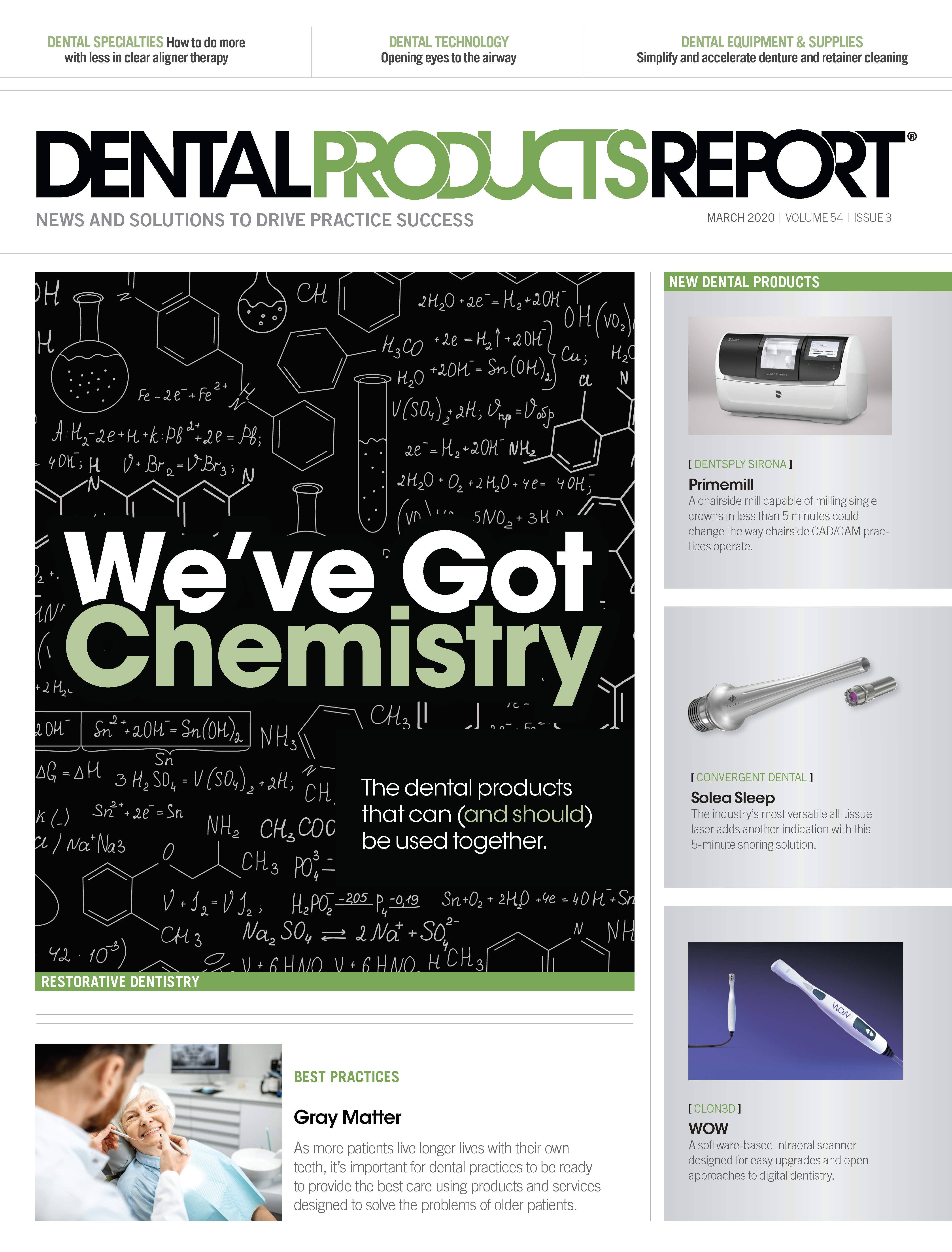We’ve Got Chemistry
The dental products that can (and should) be used together.

The TV game show “The Dating Game” (which aired on network television from 1966 to 1973, and then later in syndication) gave a bachelorette the opportunity to question three anonymous bachelors to find out with which (if any) she had the right harmony with to lead to a date. The program was, ostensibly, used to establish whether or not the contestants had any chemistry. Luckily, dentists don’t have to go to such ostentatious measures to determine whether the products that they use have the right chemistry to work together. Manufacturers go to great pains to ensure that their products work as needed to correctly complement each other.
Products
Dr. Shashikant Singhal, BDS, MS, director of professional services at Ivoclar Vivadent, observes that, on a grand scale, all the products dentists use should complement each other-from the moment a patient comes for a hygiene appointment, all the way through to a restorative treatment completion.
“Selection of products in a practice can be determined based on many factors, including clinical workflows; dentist’s, hygienist’s, or dental staff’s preferences, based on the ease of use, clinical success, price, storage; compatible chemistries; patient’s response to products and expectations,” Dr. Singhal says.
“All these factors are critical to consider while selecting products for an office. For example, during hygiene appointments, products such as fluoride varnish or chlorhexidine varnish, e.g. Cervitec Plus, can be used to improve a patient’s oral health. However, the mechanism of action of both products is different. Fluoride varnish protects teeth by making teeth stronger, whereas, Cervitec Plus will decrease the growth of micro-organisms to improve oral health. Therefore, it is critical for a user to understand products’ chemistry and indications before using them to provide the best service to their patients,” Dr. Singhal adds while describing Ivoclar Vivadent’s Cervitec Plus, a protective varnish containing chlorhexidine and thymol which protects exposed root surfaces and controls bacteria.
Products can work together for any number of reasons-including their formulation and for which function they serve.
“I think, very broadly, that where to start is that products in the same category tend to work well together,” Jason Goodchild, DMD, VP, clinical affairs, Premier Dental, observes. “Not necessarily compliment, but compatible. Like resin. If you’re using a resin bonding, you know that a resin composite, or a resin flowable material, will be compatible. For the most part, that will be true. If you’re going to use the glass ionomer materials, the same basic chemistry exists and they’ll be somewhat compatible. Then, you have to think about cross categories. For example, if you’re going to be cementing a ceramic crown, there’s no ceramic cement. What I mean by that is a cement that’s made of ceramic. We have cements that are intended for ceramic, and that would be resin or glass ionomer.”
Clinical scenarios
Complementary products seem to work best when they are used for the same procedure and can serve any number of needs.
“Products that can work together, chemistry-wise, while complementing each other’s benefits offer an added value for practitioners,” Russ Perlman, executive director of marketing and communication North America at VOCO says.
“For example, our universal adhesive-Futurabond U-used in self-etch mode only requires a 30-second, one-layer application to create high bond strengths. Combined with our single-shade, omni-chromatic nano-ORMOCER restorative-Admira Fusion x-tra-that eliminates the shade selection step, delivers superior physical properties including enhanced biocompatibility, and can be placed in a single 4 mm layer-delivering an added value for those practitioners that want to simplify their procedures, minimize their chair time while maintaining and improving high quality results. Products and product lines that complement each other have the opportunity to create results that stand out to the practitioner, their staff as well as the patient.” But it’s not always just the choice of materials. Finding the right auxiliary products can be just as important to achieving desired outcomes.
“There are complementary dental products that allow dentists to improve clinical outcomes and the patient’s comfort in a dental chair,” Dr. Singhal adds. “Isolation is extremely important to achieve good chemical bonding during direct and indirect bonding procedures. Products like OptraGate retract lips and cheeks, providing access for dental procedures by retracting soft tissues, allowing the dentist to maintain isolation. It is extremely easy to use, and it is latex-free as well.”
Sergio Arias, DDS, MS, a prosthodontist in Fort Lauderdale, Fla., pairs his indirect restorative materials-whether zirconia or lithium disilicate-with Kuraray Noritake’s PANAVIA SA Cement Universal.
“There are several reasons why I prefer to use PANAVIA SA Cement Universal with my ceramic restorations,” he explains. “First, it allows easy excess cement removal. It also has dual monomer technology. It contains the MDP that we need to bond to zirconia and metals, and the silane that we need to bond to glass ceramics, like lithium disilicate. Therefore, we no longer need to apply a separate ceramic primer to our crowns after sandblasting (if zirconia) or etching (if lithium disilicate). I have used this cement since they first came out with it in 2011. In order to achieve the best outcome, I pair the cement with the adhesive Clearfil Universal Bond Quick, which I apply to the tooth prior to cementation.”
Cervitec Plus from Ivoclar Vivadent protects exposed root surfaces and controls bacteria while working hand-in-hand with the other products used during a patient visit.
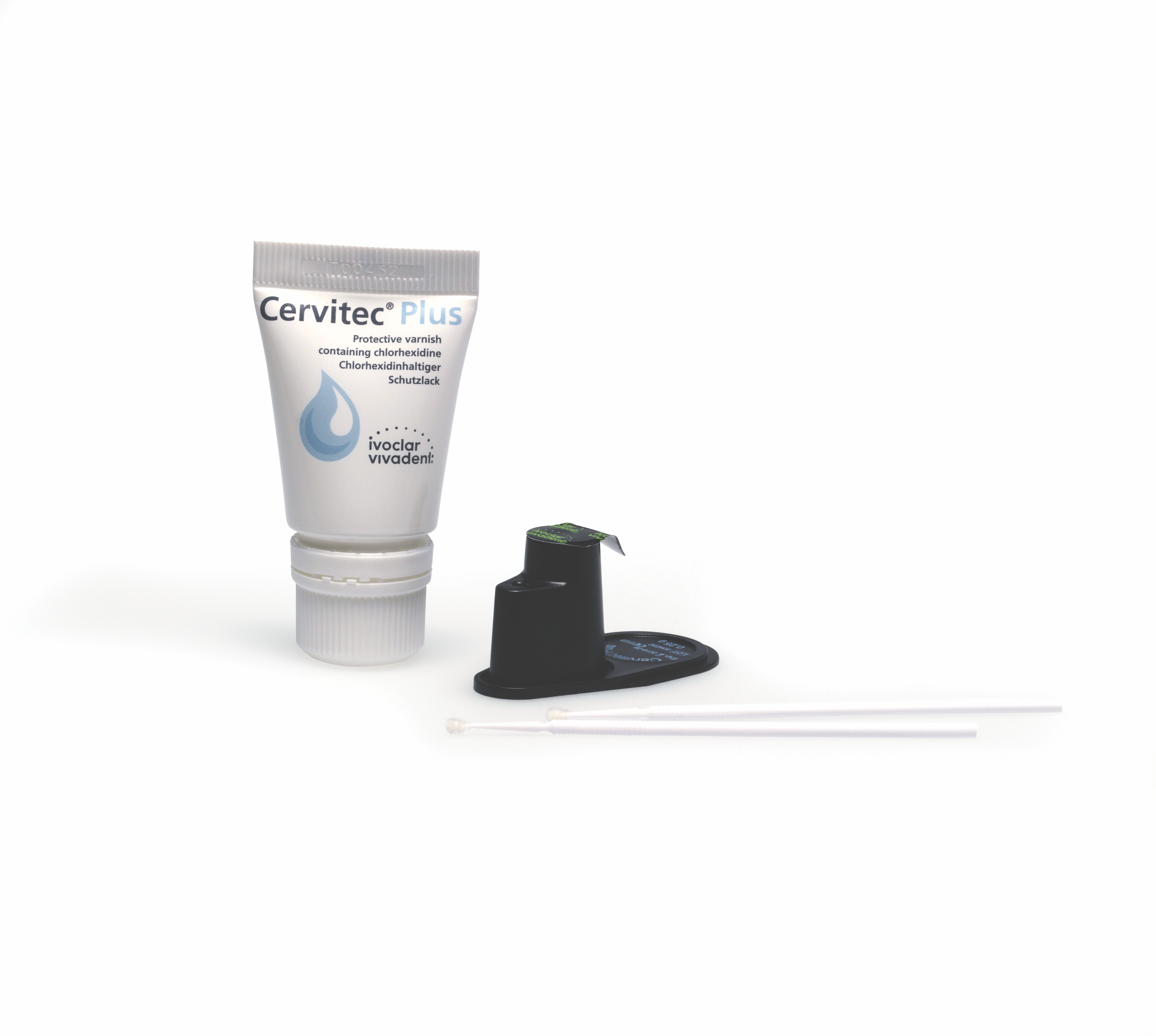
There are any number of advantages to using complementary products. Dentists benefit from such qualities as esthetics, efficiency, and performance-among others.
“You’re looking at something that’s going to give you efficiency, less time, better results,” Perlman says. “For instance, we streamline the steps in the procedure, the time that procedure takes, but maximize the quality of the restoration in which we’re providing the patient, in regard to its long-term performance.”
Some specific materials benefit from the complementary products formulated just for them.
“The use of zirconia restorations is increasing,” Dr. Singhal illustrates, while singling out some popular Ivoclar Vivadent products. “Are all-zirconia materials the same? No. Chemistries, manufacturing, and processing techniques provide variance in the properties of these materials. IPS e.max ZirCAD Prime is a premium oxide ceramic material that shares premium optical properties and high mechanical strength. IPS e.max ZirCAD Prime is complimented with self-adhesive resin cement, like SpeedCEM Plus. The presence of MDP in the cement helps in achieving chemical bond between IPS e.max ZirCAD Prime and SpeedCEM Plus without use of additional zirconia primer, hence these materials complement each other.”
Compatibility
Complementary products tend to be produced and marketed by the same manufacturer. That is, the same manufacturer that produces a composite is likely to sell etchants and bonding agents that the manufacturer says will work best with that composite. The main reason is simple utility-manufacturers already have access to and work with their products. Other manufacturers’ products would, quite simply, be more difficult to test.
“It makes sense that manufacturers that have a solution-based portfolio will test those materials, and then they would say they’re not only compatible, but they really complement each other,” Dr. Goodchild observes. “They can probably make the claim that those materials complement each other, because they test them. And by using them in a system-based approach, they complement each other.”
ZR-Cem from Premier Dental is a self-adhesive universal resin cement, specially formulated for zirconia restorations.
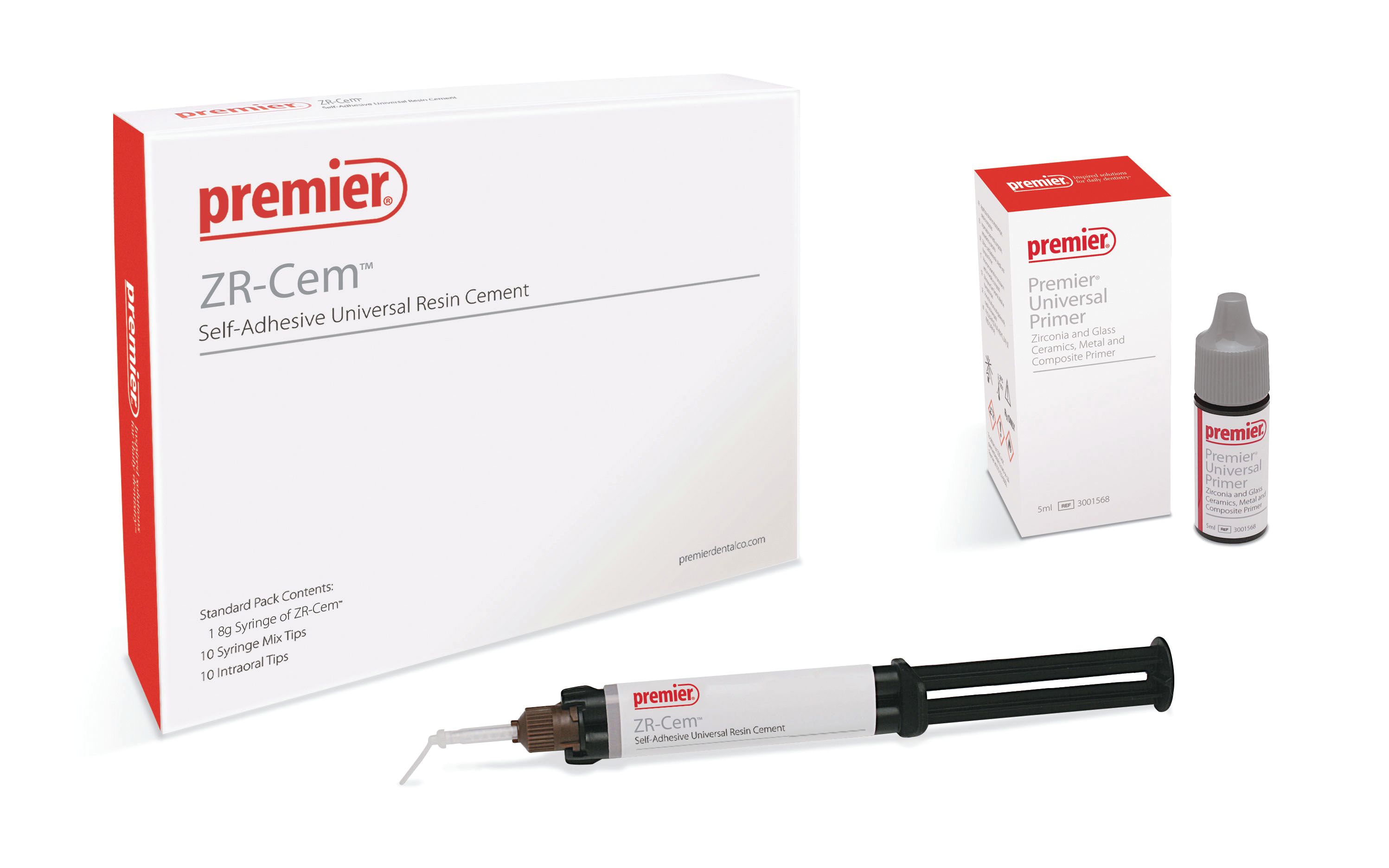
Performance is an important consideration when placing restorations, and working with products from the same manufacturer tends to ensure the best outcomes. Sometimes, those outcomes are achieved simply because their materials and chemistries are better matches, coming from the same producer.
For example, the Bioclear Method uses a suite of complementary tools, including a combination of 3M materials and Bioclear instruments, to deliver their restorative solution.
“If you’re doing a Bioclear technique in the anterior of the mouth, where you’re getting the flowable and the composite pretty well mixed together, but they can still have lines,” Tim Dunbar, PhD, advanced product development specialist at 3M, observes. “You really want to have both of those products shaded to the same color and the same opacity. And even though manufacturers generally claim that their composites are following the VITA Classical Shade Guide system, there can be slight shade variations among composites from different manufacturers. So, you could get an A3 from one manufacturer that, to another manufacturer, might match an A2 or even an A1, much better. So, if you’re doing a highly esthetic procedure, I would strongly recommend sticking with one system.
“If it’s something in the posterior, where esthetics aren’t as important, then it probably doesn’t matter as much. But the caveat is that when 3M designs our products, we ensure that they all work together. So we make sure that our composite is going to match well with every generation of adhesive that exists-fourth, fifth, sixth, seventh, and then this new universal generation.”
“With Admira Fusion x-tra being a single shade, they’re not having to decide: Is it an A1, is it a B2? They already know that what they’ve chosen is going to match,” adds VOCO’s Perlman. “It’s going to match very nicely and perform very nicely. It’s going to polish very nicely. Meanwhile, the universal adhesive works in every adhesive scenario, so the practitioner doesn’t have to play the guessing game, and continues to minimize the variables, while maximizing the consistency.”
That sentiment is echoed by Dr. Arias when performing his restorations.
“Kuraray Noritake doesn’t make light-cure cements for veneers,” he says. “For veneers, I use RelyX Veneer, and I use Scotchbond Universal. So it’s always important to pair your cement with the sister adhesive. So I’m not going to use a 3M adhesive with my PANAVIA. I use the CLEARFIL Universal Bond Quick. They say you can go from one side to the other, but I think is best to keep it within the same family.”
Mix-n-match
While manufacturers encourage dentists to use products from the same source, doctors frequently use preferred products from different vendors. Dr. Goodchild refers to that practice as “hodgepodging.”
“I can take an etch from Premier,” Dr. Goodchild says. “I could take a bonding agent from 3M, I could take a composite from Dentsply Sirona, I could take a curing light from Kerr, I could take a finishing and polishing system from Brasseler, and wind up with wonderful results. And the most important thing, hodgepodging is not a bad thing. In fact, some people like products from different manufacturers for different reasons. They handle well, their price is good. They’ve had great results in their hands. There are lots of reasons why people take products from different manufacturers rather than from just one. But the most important thing is that I’m reading directions and understanding how those products are intended to be used. Because, even though I think there’s this umbrella of ‘general compatibility’, each one of those products may have nuances that play a direct role in how well they perform.
Case Study and clinical images courtesy of Sergio Arias, DDS, MS, Prosthodontist.
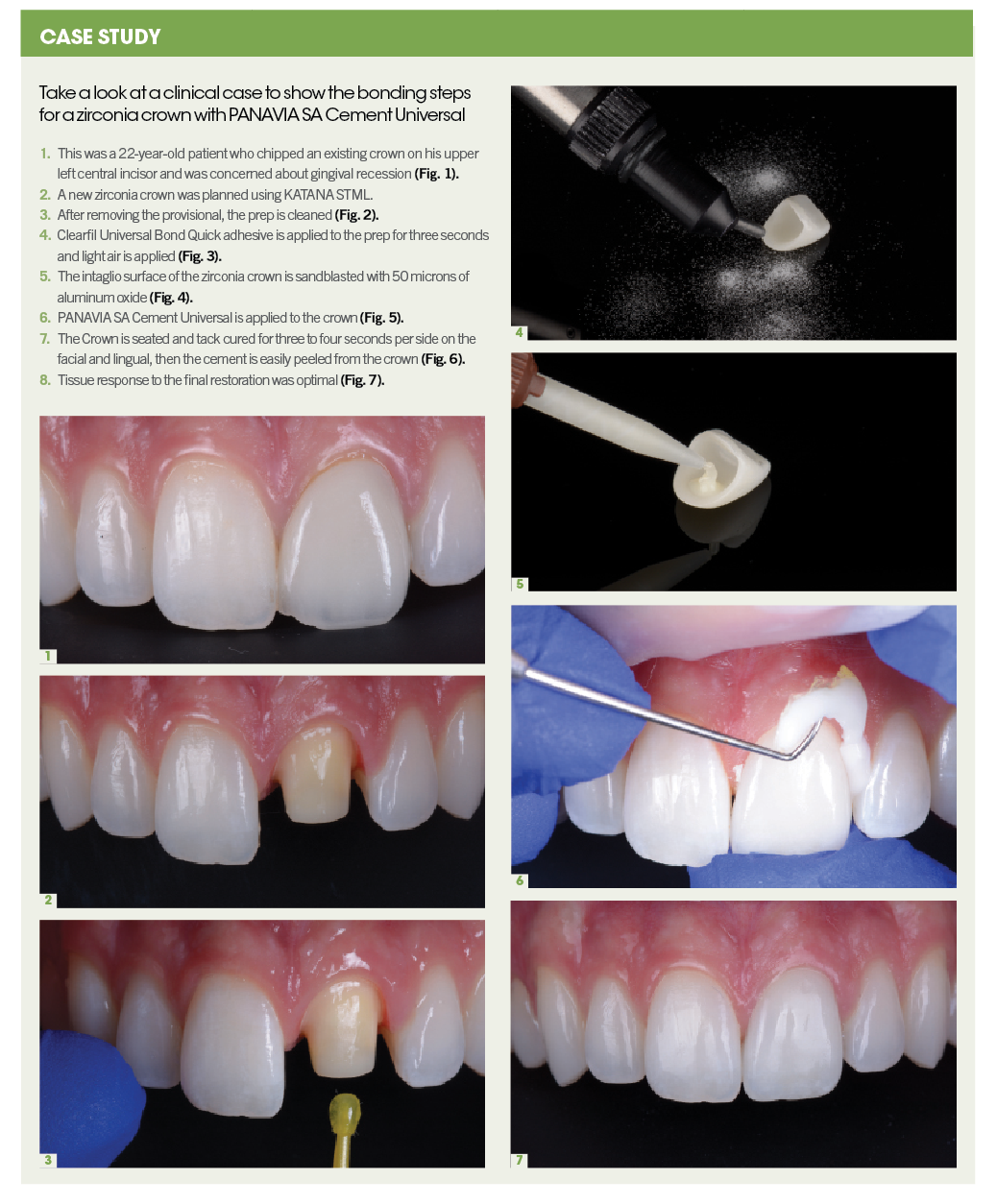
“You have to be a little more careful to make sure that they’re all compatible and that you could get the best results,” he continues. “And that’s not going to be something that the manufacturer will tell you. That will probably come from peer review recommendation.”
Some manufacturers try to ensure at least some level of compatibility. These efforts provide greater freedom of choice, but there is no way to ensure universal compatibility.
“Whenever we develop products, we aim to produce open systems that will be compatible with other manufacturer’s products with similar chemistries,” Dr. Singhal says. “We test the compatibility of Ivoclar Vivadent products with other manufacturer’s products. However, it is not possible for any manufacturer-including us-to test the compatibility of their products with all the products available in the market. In addition, during a clinical failure, if an operator has used competitive manufacturer’s products, it becomes difficult to troubleshoot a possible reason for a failure. The best recommendation will be to consider manufacturers as a resource, and contact them to confirm compatibility questions.”
Beyond the chemistry set
When dentists think about the chemistry of products that work well together, they aren’t just thinking about little bottles and syringes. The curing lights used to polymerize resin composites also affect the chemistry of those materials.
“In general, dentists don’t realize the importance of their lights for their practice,” Dunbar says. “We find a decent amount of, I guess, say, just ignorance. They’ve got so many things going on in their practices, that they often don’t have time to think about how important proper light curing is.”
“They don’t follow these instructions, in terms of the duration of light cure time, and things like that,” Tao Gong, technical services specialist at 3M, adds. “The biggest steps that are missed include not calibrating or measuring their light’s intensity, along with not being aware of the strength of light that it’s putting out, because strength of light and curing time are very related to each other.”
SpeedCEM Plus is a cement well-suited for zirconia, but, because of the way it is formulated, it is optimal when paired with IPS e.max ZirCAD Prime from Ivoclar Vivadent.
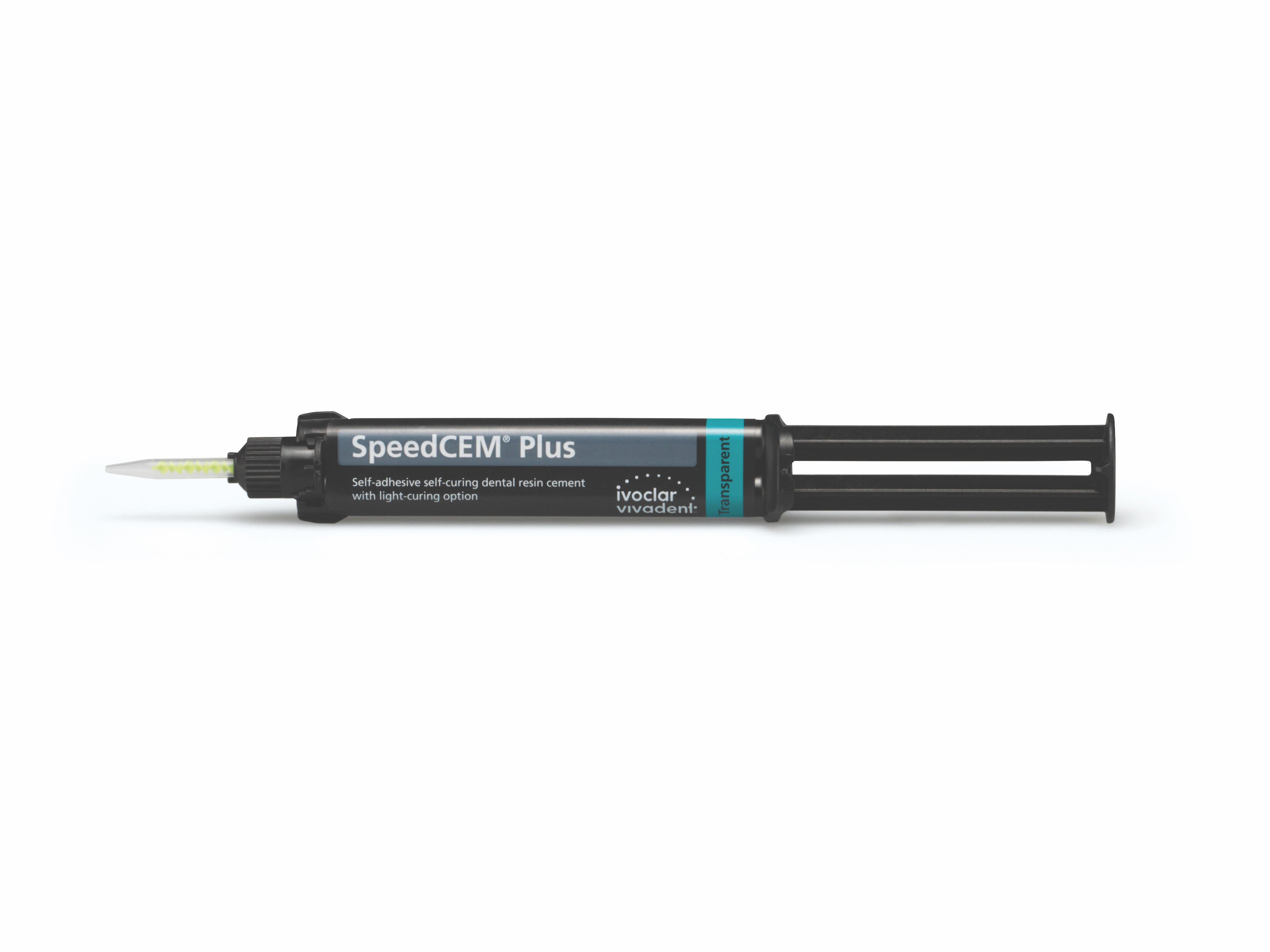
While the majority of curing light issues can be ameliorated by proper maintenance, other systems require specific curing lights.
“We have a composite system called the 3s PowerCure System,” Ivoclar Vivadent’s Dr. Singhal states. “This system includes an adhesive-Adhese Universal, flowable bulk fill composite-Tetric PowerFlow, condensable bulk fill composite-Tetric PowerFill, and a curing light-Bluephase PowerCure with a three-second curing mode having a light intensity of 3,000 mW/cm2. When used together, an operator can polymerize adhesive and composites in only three seconds without compromising clinical outcomes. However, components of this system can be polymerized in 10 seconds if a curing light unit with power intensity of 1,000 mW/cm2 is to be used. That’s the beauty of unique chemistries.”
The method in which those products are delivered are also affected by a product’s chemistry. That is, the composition of the material affects how it is applied. For example, Ultradent manufactures endodontic tips ideally suited for delivering specific medicament formulations.
“It’s super important to have a very high quality product for dental fields, but it’s also important how you deliver these products on the spot you need,” says Dr. Renato Miotto Palo, an in-house endodontist at Ultradent. “So, in many fields in dentistry, they have their own particularities. For example, in endodontic treatments, the root canal space is very narrow, very thin, with a lot of flattened areas that you need to clean, that you need to disinfect. So, good chemistry would help us to disinfect, to apply the bacteria-killing process. But it’s very important how to deliver this inside the very thin space. NaviTips are very thin tips that have side ports that you can deliver liquids for disinfection or paste for medication inside the root canal. So the best combination between sodium hydrochloride for disinfection and chlorhexidine and citric acid and EDTA.
NaviTips from Ultradent Products are designed to administer medicaments within root canals. The cannula of each NaviTip tip is slightly rigid through the base and center, but flexible at the tip to allow for navigation of curved canals.

“Also there’s a flexibility at the tip of NaviTips that helps you to navigate in curved canals,” he continues. “So, this combination of high-quality, high-finishing and flexibility puts NaviTips into very high-quality positions against other tips.”
NaviTips are marketed to be used with Ultradent’s own products, but they can be used with those of other manufacturers, as well.
“I know many dentists use the NaviTip to navigate inside of the root canal with different solutions,” Dr. Palo says. “NaviTips can be used with other solutions, because it’s a very good solution for what dentists need delivered.”
3M launched a new device at the Chicago Dental Society Midwinter Meeting. The new product is an updated syringe that was designed specifically for flowable composites and aims to improve product application. 3M’s current flowable composites, including 3M Filtek Supreme Flowable Restorative, will now feature the improved syringe design.
“It provides better hand comfort, eliminates bubbles and provides better access to the preparation, so that our customers can seamlessly incorporate our flowable composites into their clinical procedures,” Gong says. “It is a new delivery system, it’s a new syringe design that we created specifically to address the pain points for the customer in terms of ergonomics and bubbles during application.”
When in doubt…
There’s a homey adage that should guide any clinician who is interested in mixing and matching products: When in doubt, read all of the directions.
“I like to joke that instructions are for people that don’t know what they’re doing,” Dunbar observes. “When you pick up a bottle of adhesive that you haven’t used before, you think, ‘Oh, it’s just an adhesive. I’ll cure it, like I do my other adhesive’ or ‘I’ll apply it, like I do my others,’ but the doctor really needs to read the instructions to make sure there’s nothing different about application of that adhesive. One of the most common mistakes is not reading and understanding the instructions for use for each product.”
“The biggest advice I can give to any dentists when they want to adopt a new material, try something different, is, ‘You just have to read directions,’” Dr. Goodchild says. “We’re not good at that. I just thought dentists were lazy, but we’re not lazy. We’re just so used to doing the things that we do under this general umbrella of ‘compatibility’. We’re just so used to working in that arena, that when we pick up something new, we expect it to work just like everything else we’ve used. But that is not the case, and that’s why it’s so important for dentists to read directions. There are small nuances within each material, and if you use them apples-to-apples, you may not get the results you want. You have to treat it as a new thing, and that’s scary for dentists, because your ability to work quickly and efficiently rather than stop and read these directions before I go to the next step-that slows you down. And maybe that doesn’t give you the appearance of confidence in the chair. But, it’s so, so important for us to do it. There are a lot of forces acting on the dentist that make adoption of new products somewhat challenging, and that’s why we get forced back towards this idea of, ‘What works well in my hands.’ We need to break out of that.”
Dentists should not be afraid to embrace new systems or try to mix-and-match products if so desired (and those products are being used for appropriate indications).
“My advice is: I know that these products and these procedures work well in your hands and you’re used to doing them that way and you’re getting good,” Dr. Goodchild advises. “But what if I could show you a different way to get the same results that’s better, safer, faster, easier? What if I could show you something that could work better in your hands? Would you at least be open to it? They can really think, ‘You know, this has worked well for me in my career. Why should I want to try something new?’ They could think that, but they just need to be open to the idea that things are changing, things are evolving. We’re coming up with new and better stuff all the time. So, find a way to evaluate it. Ask for samples. Watch videos online. Go to CE courses. Call your buddies or your peers. Continue to look and see what else is out there. The end goal is to figure out how can we continue to improve and provide the best service we can for our patients.”
Some adventurous souls decided to use a superficial game show to help them find their perfect match. Happily, dental product manufacturers have done the heavy lifting, so it’s not necessary to go to such measures to find products that work and play well together.
